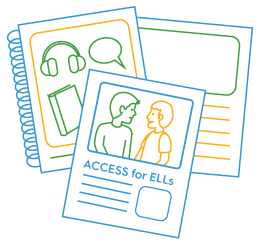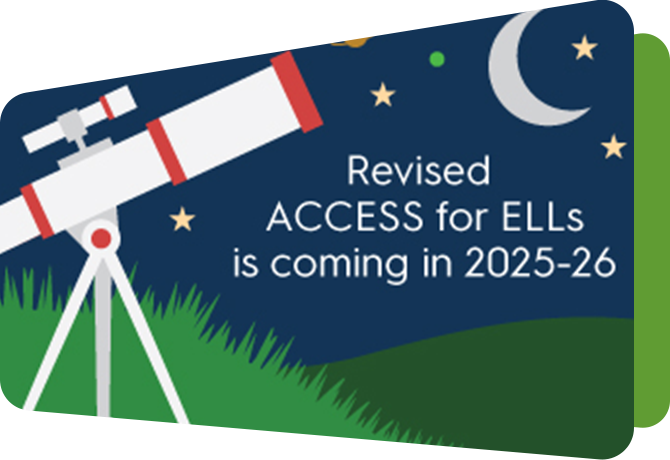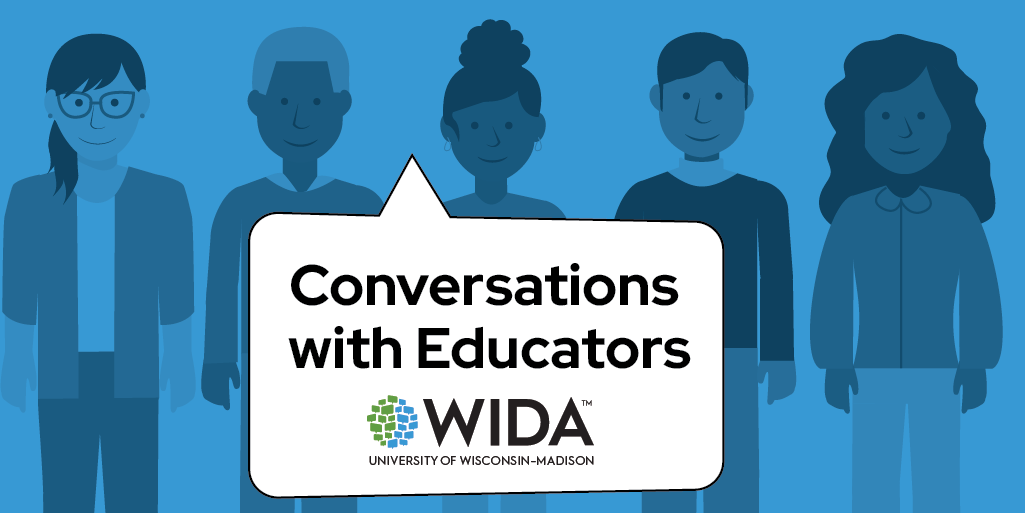Resources/Recursos
Featured Resources



All resources/Todos los recursos
Filter resources by:
Resources/Recursos
Examining English Learner Testing, Proficiency and Growth: Before and Throughout the COVID-19 Pandemic
This report examines English learners’ (EL) testing, proficiency and growth in the academic years of 2018–19, 2019–20 and 2020–21, using population-level data from ACCESS for ELLs Online, administered across the WIDA Consortium to students identified as ELs. The objective of the report is to shed light on the impact of the COVID-19 pandemic on ELs’ educational outcomes.
October 2021
Authors: Narek Sahakyan, H. Gary Cook
Released October 2021
ACCESS for ELLs Parent Letters (multiple languages)
This letter, available in many languages, contains general information about ACCESS for ELLs and is meant to accompany ACCESS for ELLs score reports as an explanation for parents and guardians. It is provided in an editable format to allow districts and schools to include additional information regarding test administration dates and state policy.
Resource Details
Released December 2020
Performance of Technology-Enhanced Items in Grades 1–12 English Language Proficiency Assessments
Technology-enhanced items (TEIs) are innovative, computer-delivered test items that are more authentic and interactive than traditional multiple-choice items (MCIs). This study examines the performance of grades 1–12 English learners on TEIs compared to MCIs on the reading domain of ACCESS for ELLs Online.
Published December 2020
Authors: Ahyoung Alicia Kim, Rurik L. Tywoniw, Mark Chapman
Released December 2020
Generating Imputed Overall Composite Scale Scores for English Learners With Disabilities Who Are Missing Domain Scores in the ACCESS for ELLs Assessment
This technical report aids WIDA Consortium members and stakeholders in producing imputed overall composite scale scores and proficiency levels for students who are missing scores in one or two domains due to a disability.
Published September 2020
Author: Narek Sahakyan
Released September 2020
What Is WIDA ACCESS? (multiple languages)
Send this handout, available in multiple languages, home with students as an introduction to ACCESS when testing is scheduled or as a reminder before scores are shared. This flyer explains what ACCESS is and why students take this kind of assessment. Use this resource to help parents understand annual language proficiency testing.
Note: For family handouts that explain English learner status and language testing, refer to the What Is WIDA Screener? and What Is WIDA Alternate Screener? handouts.
Resource DetailsReleased July 2020
ACCESS for ELLs: Understanding Your Child's Scores (multiple languages)
Send this flyer home with students along with the ACCESS for ELLs Individual Student Report. This flyer explains each piece of score information included in the report. Use this guide, available in several languages, to help parents understand what scores mean and how they are used.
Resource DetailsReleased July 2020
WIDA Speaking Rubric Grades 1-12
Use the WIDA Speaking Rubric to understand the scores students earn on ACCESS for ELLs (Online and Paper), analyze student performance in the classroom, and plan ways to scaffold language learning.
Note: Do not use this rubric to score WIDA assessments. Find relevant scoring tools in the appropriate WIDA assessment training course.
Resource Details View Download NowReleased January 2020
WIDA Writing Rubric Grades 1-12
Use the WIDA Writing Rubric to understand the scores students earn on ACCESS for ELLs (Online and Paper), analyze student performance in the classroom, and plan ways to scaffold language learning.
Note: Do not use this rubric to score WIDA assessments. Find relevant scoring tools in the appropriate WIDA assessment training course.
Resource Details View Download NowReleased January 2020
Investigating K-12 English Learners' Use of Universal Tools Embedded in Online Language Assessments
This study examined how English learners in grades 1-12, with and without disabilities, used online accessibility features during an ELP assessment. These accessibility features are designed to provide the necessary support for the general EL population, including ELs with disabilities.
Published March 2019
Authors: Ahyoung Alicia Kim, Meltem Yumsek, Mark Chapman, H. Gary Cook
Released March 2019
Choosing an Interim Assessment: Guidelines for Stakeholders
This document describes WIDA's viewpoint of the criteria for an assessment to be used as a valid interim English language proficiency assessment in support of the annual administration of WIDA ACCESS.
Resource Details View Download NowReleased November 2018
Evaluating Teacher Effectiveness Using ACCESS for ELLs
Regardless of the growth model, aggregate test-score-based models of student growth require large and longitudinally connected samples of student data. When sample sizes are small it becomes impossible to reliably estimate and disentangle district, school and teacher effects from student growth data.
Published June 2015
Author: Narek Sahakyan
Released June 2015
Examining District-Level Growth Using ACCESS for ELLs
This research report provides a description of a study examining school districts in the WIDA Consortium whose English language learners (ELLs) exhibit consistently high growth on the ACCESS for ELLs (ACCESS) assessment.
Published August 2014
Authors: Narek Sahakyan, H. Gary Cook
Released August 2014




